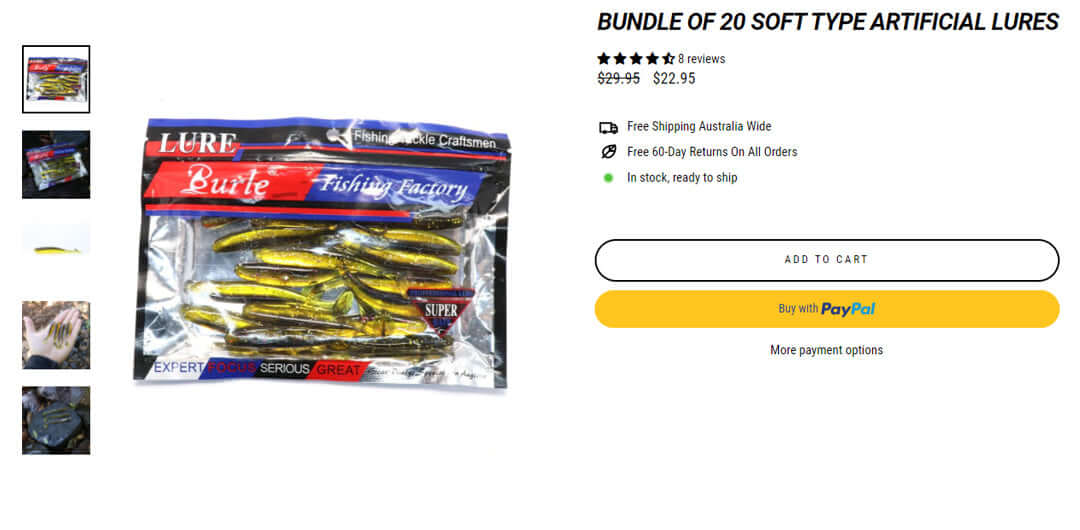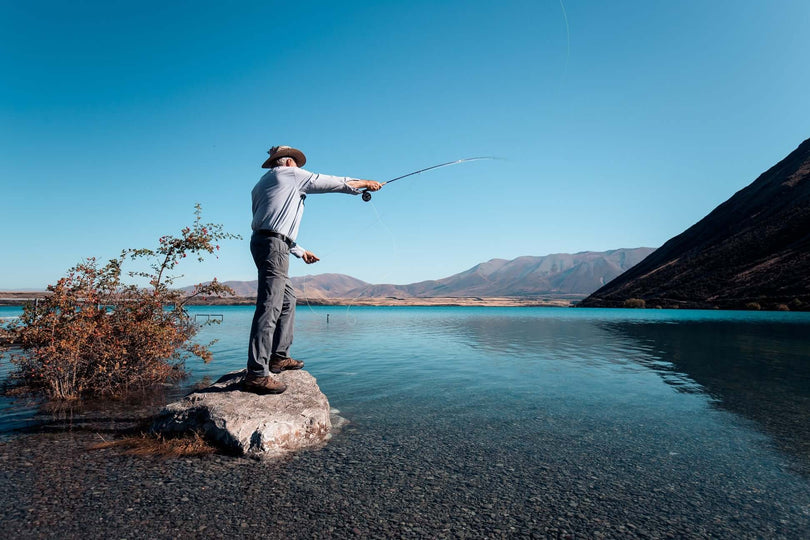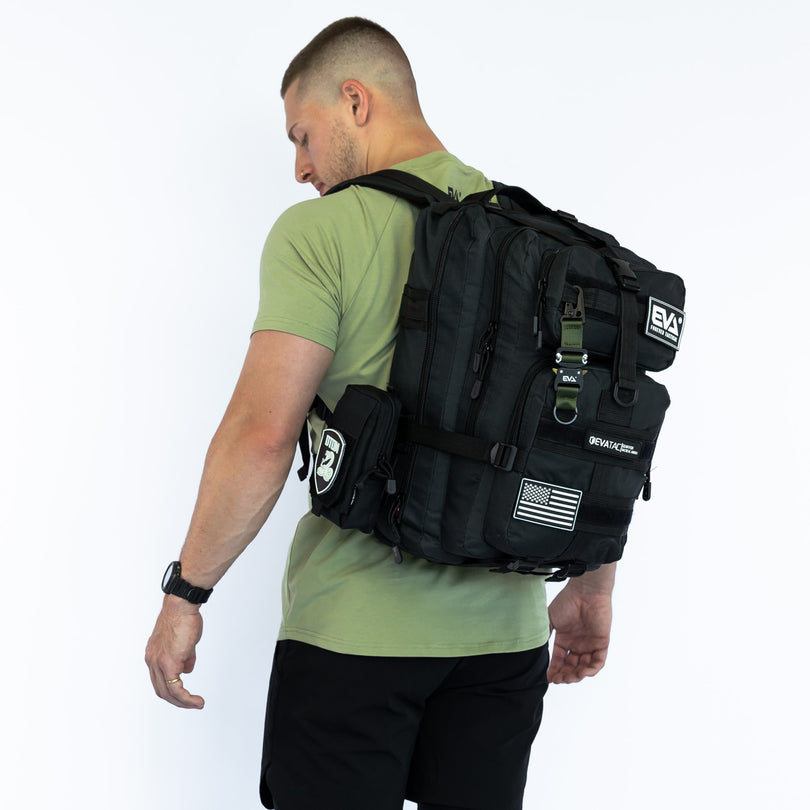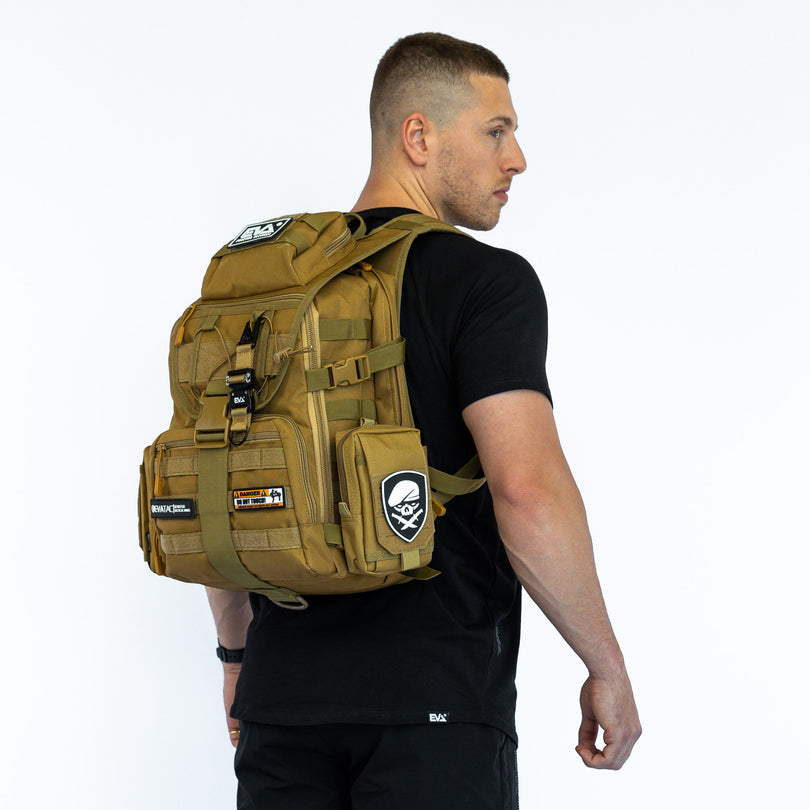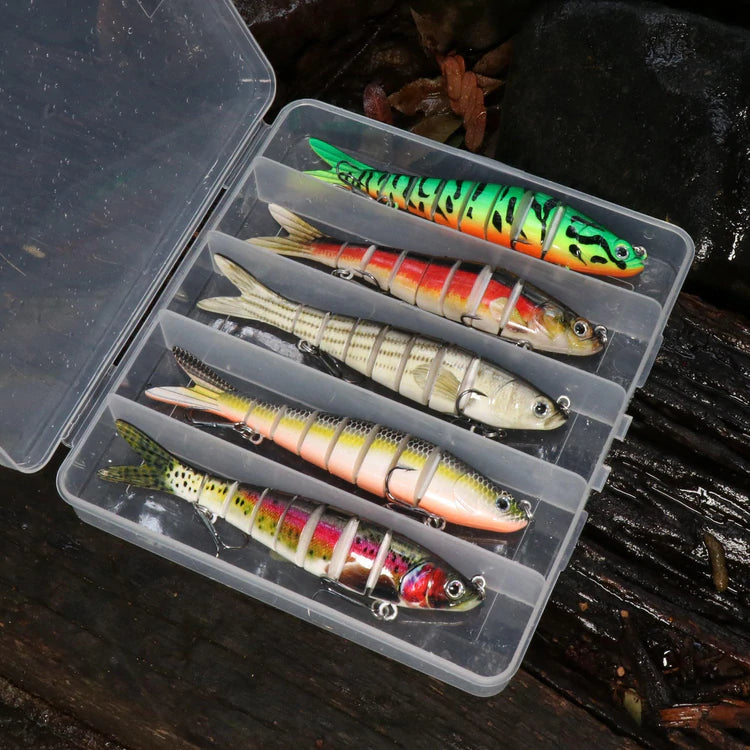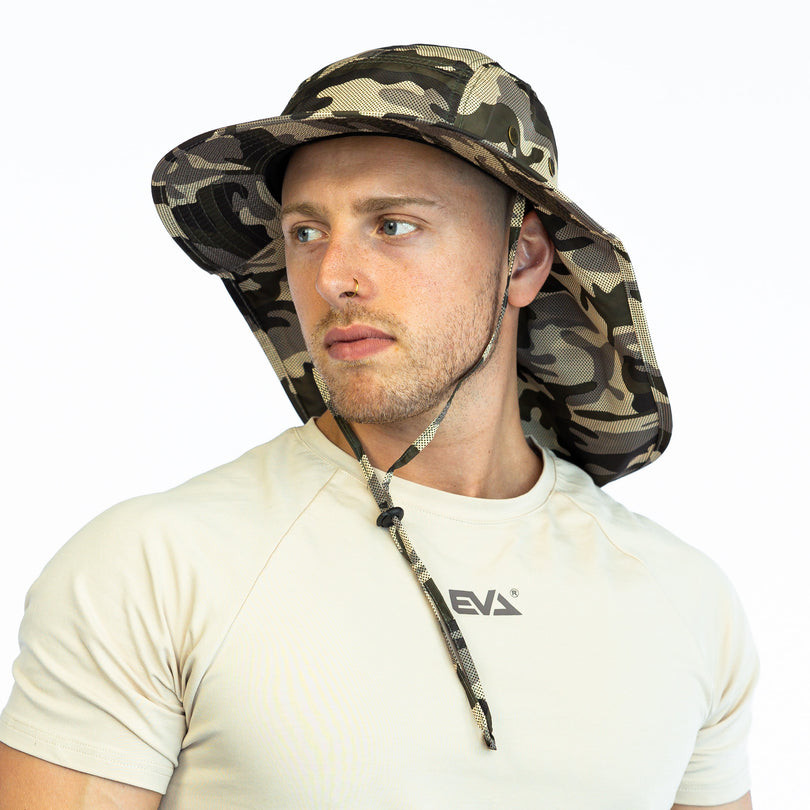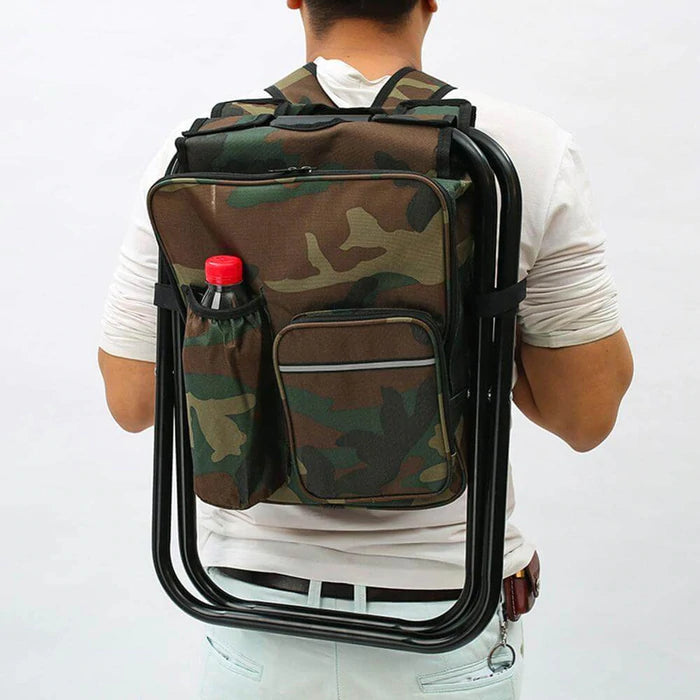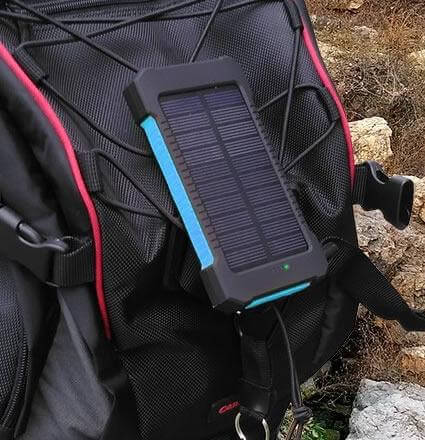There's more than one way to catch fish. Fishing lures come in an endless number of shapes, sizes, and weights. They can be very small and subtle or larger and more flashy depending on the type of baitfish and the species of fish they are designed to catch. While some ways are more effective than others, there is no one type of fishing lure that will work for every person or every lake. Different lures can be used to attract different types of fish in different conditions.
There are many things to consider when choosing a type of fishing lure. Whether it be for fresh or salt, there are thousands of choices out there that you can choose from. We will go over the different lures available and their pros and cons as well as how they work. This way you can choose the best lure for your needs.
To help you understand what fishing lure is best for your style of fishing, Koala Outdoor listed the most common types of fishing lures, their purposes, and the best times to use them.
How do fishing lures work
There are several different types of fishing lures. Some work with the vibrations in the water; others with sound, and some even emit scents attracting fish. They work by tricking a fish into thinking that the lure is real food. Lures are made to either imitate what the fish are feeding on or to catch them with speed, sound, and colour. Each lure type is specifically made for a certain species. For example, to go after Bass, you should use soft-plastic worms or plastic jerkbaits, but if you want to catch marlin, it’s best to use a vertical jig.
This is done in a couple of ways: by using reflective surfaces like metal or glass, or by moving the lure in a way that makes it look like live prey. Knowing how each of these lures works can help you choose which ones will best attract the fish where you are fishing.
Lures vs Bait
Finding the best lure or bait for fishing can be one of the most critical decisions a person makes during the prepping of their gear. While there are a lot of subtle differences between lure fishing and bait fishing, one of the most critical differences between the two methods is how you catch your fish, as well as which lures and baits to use. There are quite a few factors that determine whether or not you'll be able to catch fish with a particular type of lure or bait.
Today, you're going to learn what those major factors are, along with exactly what kind of baits and lures you should be used for both methods.
What is a fishing lure?
Some anglers prefer to use artificial baits or lures. An artificial bait designed to look like live prey to a fish. It can include various attachments like feathers or shiny spinners. The type of fishing lure you use depends on what type of fish you plan to catch and at what water depth.
What is fishing bait?
Bait can bait fish naturally. The most common type of natural bait is worms and insects. Earthworms are a universally popular bait used by anglers for trout, walleye, bass, and other types of fish. Other baits include grubs, maggots, grasshoppers, crickets and aquatic snails.
What are the different kinds of baits?
If your prime objective is catching fish, then it's advisable to go for natural baits first. They are readily available, easy to use, and will definitely produce good results for you most of the time. When people think of natural baits, they generally think of worms especially nightcrawlers, grasshoppers, minnows, crickets, or whatever is indigenous to their area. Each type of bait has its own unique method of presentation.
There are several kinds of baits used in fishing.
Natural/Live baits
Live baits are naturally occurring fish or insect that is used as an attractant. Examples are worms, minnows, grasshoppers, frogs, crickets, and maggots.
The best baitfish are those that are lively, fresh, and have just the right amount of scent to them. If your natural baits are not lively enough or are smelling off because they've been sitting for too long, then you'll probably come home empty-handed.
Pre-prepared baits
Pre-prepared baits are manufactured lures made out of metal, rubber, or plastic. Attracting fish by imitating creatures such as shrimps, prawns, crayfish, and crabs. Examples are spinnerbaits, spoons, soft plastics, and metal jigs.
Bait can also be placed on a hook or lure that is not alive. This would include processed meats such as luncheon meat and chicken.
If you're not successful with natural baits, then there are always artificial fishing lures to fall back on. Just about every known species of fish has been caught at one time or another with a wide variety of artificial lures.
Artificial lures
Some anglers often use artificial baits that imitate minnows, crabs, shrimps, and other prey fish they seek. Seasoned anglers usually carry several lure types to reach the top, subsurface, and bottom water column. Many types of soft baits are available, such as spoons, plugs, poppers, jigs, spinners, and flies.
Bait vs Artificial lures
When it comes to fly fishing, which is best – artificial lures or bait? When it comes to deciding how to choose bait for fishing, new anglers should know the merits of natural and artificial bait. Learn to fish more effectively by understanding the advantages of each.
Live bait
Most anglers would agree that live bait is incredibly effective. Bass fishing with bait works better than lures because you're giving the fish something they already eat naturally. When using lures for fly fishing, you have to work as hard to convince a fish to eat your lure as you do when fishing with bait. Learning to use fishing lures takes practice and experimentation, but in the end, it’s worth it!
Some of the more popular baits include:
- Worms: good bait for nearly all freshwater fish and you can find all you need in a few shovels of dirt from a shaded, damp area. Since worms are soft, they work best on finesse-style rods that let you feel the slightest bite through the line as it's being reeled in.
- Minnows: Store in a bucket with plenty of cool water to keep them alive. Never crowd them.
- Insects (crickets, grasshoppers, beetles, etc.): Many varieties all make good baits, particularly later in the summer and autumn.
- Leeches: Excellent bait for many fish when hooked through the sucker in the tail.
- Snails: Snails can also be called slugs or craws. They are very similar to worms except that they have a straight tail as opposed to a curly one. Snails can be used in any water condition and work best on jigheads since they can sometimes sink too quickly without it.
Pros of bait
- Attracts fish with scent naturally. This is especially helpful when fishing large, open water or when you're not sure where the fish are. The scent will draw the fish in.
- Cheaper than lures. Bait is often cheaper than lures in the long run. It’s free if you find your own while out and about in nature.
- Often gets more catches. Natural bass fishing baits attract a wide variety of fish species, raising your chances of catching more fish.
- Great for leisurely fishing. Bait fishing is one of the oldest forms of fishing and can be very relaxing on a nice day. On days when you want to spend extra time out on the water with your children, a lot of work can be done preparing gear and baits which makes it easy to spend an afternoon fishing.
Cons of bait
- Messy. While hard plastic fishing lures are certainly a convenient way to spend a day on the water, there’s no denying that natural bait is messier and smellier than using power bait lures. Prepare to get your hands, clothing, and gear really dirty when setting out to capture your own bait.
- Bait must be kept alive. When it comes to storage, you can't just throw your bait in your tackle box ready for your next session. Most bait will require some form of refrigeration to stop it from going off, with the problem being that most types of bait have a terrible smell when they go off – not to mention the process of keeping your tackle fresh is quite time-consuming and expensive.
- Regulations. When using bait, adhere to proper regulations; choose the right bait for the right situation.
Artificial fishing lure
Whether you fish year-round or just in the summertime, artificial fishing bait is a great way to add some variety to your fishing. They are usually made of soft plastic baits, metal, or some composite materials and are designed to imitate minnows or insects that are floating on the water’s surface or on the bottom of the lake, river, or stream where you want to fish. Many experienced anglers prefer them since they can be more effective than bait, don’t require handling, and are easier to use and maintain.
Some of the more common fishing lure types you’ll find are as follows:
- Crankbaits: Crankbaits are designed to dive deep into the water where most game fish like bass, walleye, trout, and pike tend to hang out.
- Powerbaits: Powerbait has been developed to attract fish more effectively than traditional baits. Good for fresh and saltwater species such as Redfin, Trout, Bass, Bream, and Flathead. An easy bait to use to target fish.
- Plugs: plug lure attracts multiple fish. Some float, some dive, and some shimmy shake, gurgle, and splash to mimic prey.
- Plastic lures: Almost always means soft plastic grubs, worms, crayfish, frogs, and swimbaits - the right lure for predatory fish.
- Poppers: Popper lures have a concave face that creates a "popping" noise when it is pulled out of the water by a tiny fish. This makes it attractive for species that like fast swimming baits like trout and bass.
- Spinners: Spinnerbait lure looks like a wheel with metal blades that spin rapidly when reeled in which makes them ideal to catch bass in clear water when there are large baitfish around.
- Jigs: A jig is simply a small hook with a lead ball near the eye of the hook, often decorated with feathers, artificial eyes, rubber legs, and tinsel.
- Jerkbaits: Jerkbaits have a flat body and a lip at the front which creates a lot of vibrations when they move quickly through the water.
Pros of lure
- Competitive advantage. Lures are designed to represent natural food items that many different species are eager to eat. While bait can sometimes be successful, using a lure can give the angler a competitive advantage over other fishermen.
- Larger catches and fewer unwanted fish. Lures enhance fishing opportunities by increasing the size of target fish that can be caught, allowing larger fish to be caught, and allowing anglers to target fish species they otherwise could not.
- More humane. Some fisheries do not allow bait, so having a few lures in the soft tackle box is always a good idea. By using lures designed to minimize deep hooking, anglers can help increase the survival rate of fish. Lures are more likely to hook fish in the mouth than live bait, making catch-and-release fishing safer and easier.
Cons of lure
- Require specific skills for effectiveness. While bait is very effective on its own, lures are physically demanding, technical, and require many variables to consider.
- More expensive than baits. Although lures are fun to collect, knowing which ones to invest in can be tricky, especially if you’re not quite sure how effective they will prove to be.
What are the main types of fishing lures?
There are several different types of fishing lures. Some work with the vibrations in the water; others with sound, and some even emit scents to attract fish. Choosing the right lure and knowing when to use which one can make a big difference in your catch rate.
Here is a list of the most common fishing lures and when they should be used:
Inline Spinners
A spinner is a metal blade that rotates around a center weight. The design of spinners usually includes multiple blades and some type of decoration to attract and catch more fish, such as an artificial insect or mollusk shell. Spinners are most effective when the current is swift and the bottom is rocky. Spinning blades can be used to spin fishing trout, salmon, bass, and panfish.
Spoons
A spoon lure is a metal lure with an upturned edge. There are many types of metal spoons; some have concave faces, while others have a flat face or a cupped face. Spoons are most effective when the current is moderate and the bottom is predominantly sandy. In general, light- to medium-weight spoons are best for small fish like lake trout and panfish, while heavy spoons are used for large fish like salmon and bass.
Popper lures
A popper lure is a topwater lure that sits up off the surface of the water. They are usually designed to catch fish by mimicking frogs or insects that have been startled into jumping out of the water. Popper lures are most effective when there is no current and the water is calm. They can be used to target bass and panfish.
Diving plugs
A plug is a weighted lure that has a streamlined shape and retractable hooks. Plugs can be designed to dive under the water at a variety of depths, allowing experienced anglers to customize their lures depending on the type of fish they are trying to attract. Plugs can be used to target trout, salmon, bass, and panfish.
Jigs
Jigging lure is one of the preferred and most productive lures of experienced anglers as they can be used in a variety of situations throughout the year. These lures are designed to mimic a number of prey species that fish target but are most popularly used to create the appearance of a crawfish. Curly tail jigs are also popular for dogtooth tuna, bass, bluegill, crappie, and perch.
What lures attract what fish?
Although most types of lures can be used to catch fish, some work better than others depending upon the species and conditions. However, you should always choose baits that look like the local prey for the fish where you are bass fishing. You don't want to use a bait that is too flashy when there isn't a lot of food around, and you don't want to use a bait that doesn't closely resemble the local prey when there is a lot of fish in an area looking for food.
Saltwater fishing
Saltwater fish can get very picky about their food sources, so knowing what they eat is important before you cast out your line. For example, trout are typically bottom feeders that eat shrimp, crabs, and small baitfish. When targeting fish particularly trout, you want lures that look like something small they would find on the bottom of the ocean floor.
Warm water fishing
Warm water fish tend to be more aggressive when it comes to what they will bite on. Warm water species include white bass, dogtooth tuna, catfish, striped bass, and largemouth bass. While these fish are all very different, they all tend to feed on the surface of the water or just below it. When fishing for warmer species you want to think about what would naturally find its way to the top of the water.
Topwater lure
There are some types of lures that work well for specific species of fish. Surf cast lures are designed to mimic prey such as crab, shrimp, and other types of inshore forage that move along the surface of the water near breaking waves. When you're fishing in saltwater lakes or bays, you want to use a topwater lure that splashes when it hits the water. This type of lure appeals to trout, snapper, and other aquatic species that are looking for prey at the surface.
Clearwater lure
Fishing in clear water requires lures that are highly visible, with little or no vibration since most game fish will be looking for prey that they can see in the murkier water. To catch more fish like bass in clear waters, use softer colors like bone, pumpkinseed, and smoke.
Dingy water
Targeting fish in dirty or dingy water requires a lure that is highly visible, with little vibration or movement since most game fish are looking for prey that they can see in the murkier water. To catch bass in dingy or murky water, use bright colors like chartreuse, yellow, and orange.
Fishing near rocks
Fishing near rocks and logs requires a lure that makes vibrations which make them attractive to fishes.
When to use different types of fishing lures
Lures should also be chosen based on the time of day and the season. When combined with a knowledge of where fish typically live and an understanding of their feeding patterns, it is possible to choose the best option for any given situation.
Jigs
Jigs are the most productive lures that involve repeatedly lifting up and dropping the line to create motion in the water. This motion attracts predators from below who come up thinking it is wounded prey, or attract species that would usually be too spooked to approach bait on top of the water.
Spinnerbaits
Spinnerbaits are a type of artificial fishing bait that spin through the water with a shiny metal blade at a fixed height above the bottom or suspending in a mid-water column.
How do spinnerbaits work?
- Freshwater Spinner Bait: They have a treble hook attached near the front of the rotating blades. When a fish bites this lure, the blades spin around creating flash and vibration.
- Saltwater Spinner Bait: Ideal for deep water fishing. Saltwater spinnerbaits have a weedless design which makes them easy to cast into deep water or around vegetation. With two treble hooks attached, they are good for catching a variety of species but especially effective when targeting large species such as snappers, groupers, and kingfish.
Spoons
Spoons are a type of artificial lure similar to spinners but with a flat metal surface instead of rotating blades. The front treble hook is attached to the center of the spoon with a weedless design that makes them easy to cast into thick vegetation or into deep water along the bottom.
How do spoon lures work?
- Freshwater Spoons: Freshwater fishing spoons have a weedless design and come in many sizes and colors. Good for catching bass, trout, and walleye on calm or murky waters.
- Saltwater Spoons: Saltwater fishing spoon lures are usually made of metal with one treble hook attached to the front of the spoon. They have a weedless design and come in many species-specific designs, including octopus spoons with three treble hooks for catching large species such as tuna and wahoo.
Soft-plastic lures
Soft-plastic lures are made by compressing rubber or silicone to create different shapes, sizes, and colors. The front treble hook is attached to the lure with a weedless design that makes them easy to cast into thick vegetation or stone.
How do soft plastic lures work?
- Freshwater soft plastic lure: Freshwater soft plastics are very effective especially when fished under a bobber or on jig heads for walleye, bass, and trout. The multi-colored lures often have glittery tails which can be very attractive to fish.
- Saltwater soft plastic lure: Saltwater soft plastics can be cast, trolled, or jigged along the bottom for catching snapper, grouper, barracuda, and amberjack. They come in many shapes including worms, shrimp, and squid imitations which are often paired with a single treble hook.
Topwater lures
Topwater lures are used by casting them at high speed from a spinning rod and retrieving the lure with a side-to-side motion to create a surface disturbance similar to what baitfish would do in order to avoid predators. Toad-style lures such as frogs and salamanders can also create a disturbance on the surface which is very effective for catching bass.
How do topwater lures work?
- Topwater lures: Includes frogs, poppers, and topwater plugs that can be cast or trolled in order to bait fish by creating a surface disturbance.
- Toad-style lures: These lures can be cast or trolled in order to create a disturbance on the surface. They are usually hard-bodied with large lips and thick bodies which creates more water displacement when trolled.
What is the most popular lure?
Fish have a fascinating array of feeding habits, with each species preferring to feed on certain things. Trout will eat earthworms but they won’t touch a maggot whereas catfish are just the opposite. The variety of lures available makes it difficult to decide which one is best for catching a specific species of fish, so if you’re starting out
Spoon lures are one of the most common types of lures that are used in saltwater fish, including perch, trout, and snapper. They come in a wide variety of sizes and weights depending on your needs. Spoons work best when you use them with bait like pinfish, mullet, or shrimp. They are designed to wobble from side to side when cast out and worked along the surface of the water which acts as an attractant for targeted fish.
Worms are one of the most common types of baits used for freshwater fishing. Whether you are using a cast net or a fishing pole, worms are one of the first types of bait you should use if you are fishing in freshwater. Worms can be used on most kinds of hooks including jigs, circle hooks, and treble hooks depending upon what kind of fish you are trying to catch more fish.
The most common type of worm used for fishing is a nightcrawler, but you can also use red worms, earthworms, and blood worms depending upon what type of fish you are trying to catch. Worms work well during the day in calm water where they have plenty of room to maneuver. They can also be used at night when hunting fish like catfish or carp.
Conclusion
Fishing requires patience and skill, but don't let that stop you from trying. It is difficult to find the right fishing lure, as each lure has different properties, strengths, and weaknesses. Depending on the type of fishing you are doing and the area you are fishing can determine what lure or combination of lures will be most successful. Not all lures and soft baits will work in every area, and some might be better suited for your experience level.
Deciding which lures to bring and what size and color is a matter of personal preference and experience. It takes time to figure out exactly what works best in each situation, but if you keep experimenting with different things, you will find out what works best for your style of fishing. Enjoy fishing!




